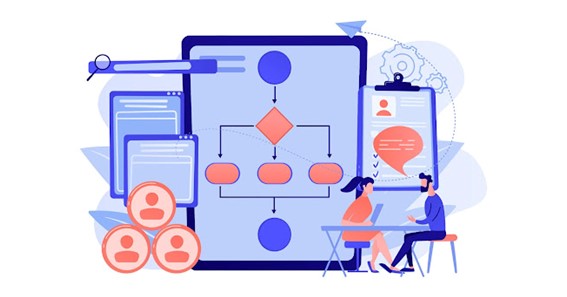According to Theodore Roosevelt- an ideal manager has an excellent instinct to hire the right people and restrain themselves from interfering while their employees work.
A successful leader comprehends the difference between managing and micromanaging.
Demonstrating trust and motivation among employees boosts their morale, inspires employees to take the initiative, and frees up your time to address more challenging business issues. If employees start feeling that project managers are breathing down their necks while watching and judging their every action, managers can crush all the creativity they could bring to the table.
Let’s dig deeper into “What is micromanaging?’ “What does micromanagement mean?’
Micromanagers, can it be identified?
Micromanagers exhibit a very governing behavior like:
- Micromanagers don’t believe in delegating work. They think that they are the only ones who can work right.
- Micromanagers provide specific and in-depth instructions on how to complete a task. They believe in dictating the tasks.
- Obsessed with controlling, micromanagers believe in regular updates and detailed reports.
- A micromanager gets angry when employees initiate something without consulting them. They get easily frustrated.
Click here – Should You Take Your Children To The Escape Game?
How does micromanagement affect employees?
Micromanagement is one of the significant reasons for people exiting a company; it can have the following negative consequences:
- Affect productivity: According to the Journal of Experimental Psychology, employees who feel that they are under regular observation have low productivity.
- Employees’ health gets impacted: Micromanaged employees are found with health issues like high blood pressure and sleeping disorder, including the risk of heart attack, reveals the study by Harvard Medical School.
- Reduces employee morale: Micromanagement minimizes the employee’s morale. As a result, employees develop a negative attitude toward their jobs.
Being governed, judged, and hovered over at work can be highly stressful. Employees feel robbed of professional development opportunities, creating a fear-inducing work environment.
How to handle micromanagers?
People resent when they feel controlled. And in the end, they quit as soon as they receive new opportunities. Micromanagers can be dealt with in alternative ways that do not involve leaving a job you like.
We are sharing easy ways to handle the micromanagers without quitting.
- Watch yourself: If you feel you are the only one under scrutiny, watch yourself. There can be reasons for concern. You may be showing up late to the office, taking long breaks, and making frequent errors in work. If your manager has fair concerns, it’s time for you to rectify your mistakes and watch your actions. Micromanaging will stop.
- Communicate your work status: Respond to your manager’s request for information. If they email you frequently for status updates, reply to them. Always initiate to share your work status with your leader. Receiving emails from you rather than the other way around may make them wonder if their behavior was excessive.
- Take the initiative at work: If you believe your manager is watching your work or pointing you out during team meetings, it is time for you to take work initiative. Come up with new ideas, share bottlenecks if any exist, and solutions to work barriers. This will assist your manager in recognizing your interest in the job.
Click here – Tracking Monthly Expenses: How to Set Yourself up for Financial Success
How to address micromanagement?
If you are a micromanaging boss and want to satisfy your need for information without stressing your team, Resource scheduling software is the best solution for you.
Earlier project management included maintaining data using spreadsheets. Every team member has their sheets, which they keep updating on time and sharing in emails. It was full-time work for decision-makers, extracting the correct data from every spreadsheet.
Today, managers prefer using software. eRS is cloud-based software that simplifies the process of planning and monitoring all projects. eRS Gantt Chart allows viewing existing schedules of resources and projects, along with availability.
If you are a manager who has never used resource management software or come across a complex one, eResource Scheduler comes with effortless functionality and a friendly user interface. You will surely love the transparency and real-time updates on the projects.
Drag and drop features will help you to schedule effortlessly. Resource overload indicator helps to know the over and underutilized resources. The employee scheduling module provides an overview of everything you’re looking for. You are not required to request or email regular updates from your team members.
If your tendency to micromanage stems from a desire for real-time information, the eRS Timesheet module can make your job easy. You can quickly peek into the timesheet data of the employees who are frequently asked for regular updates.
You can monitor your employee’s progress with the reports module and maintain complete control over everything without micromanagement.
Conclusion
Workplaces are no longer expected to be authoritative, with only one voice. Employees today want self-governance and to feel empowered as they impose their skills and abilities on the company’s goals. Employee turnover and interrupted company growth can result from a failure to trust and delegate, whereas a mutual respect environment creates a happier and more productive workplace.

